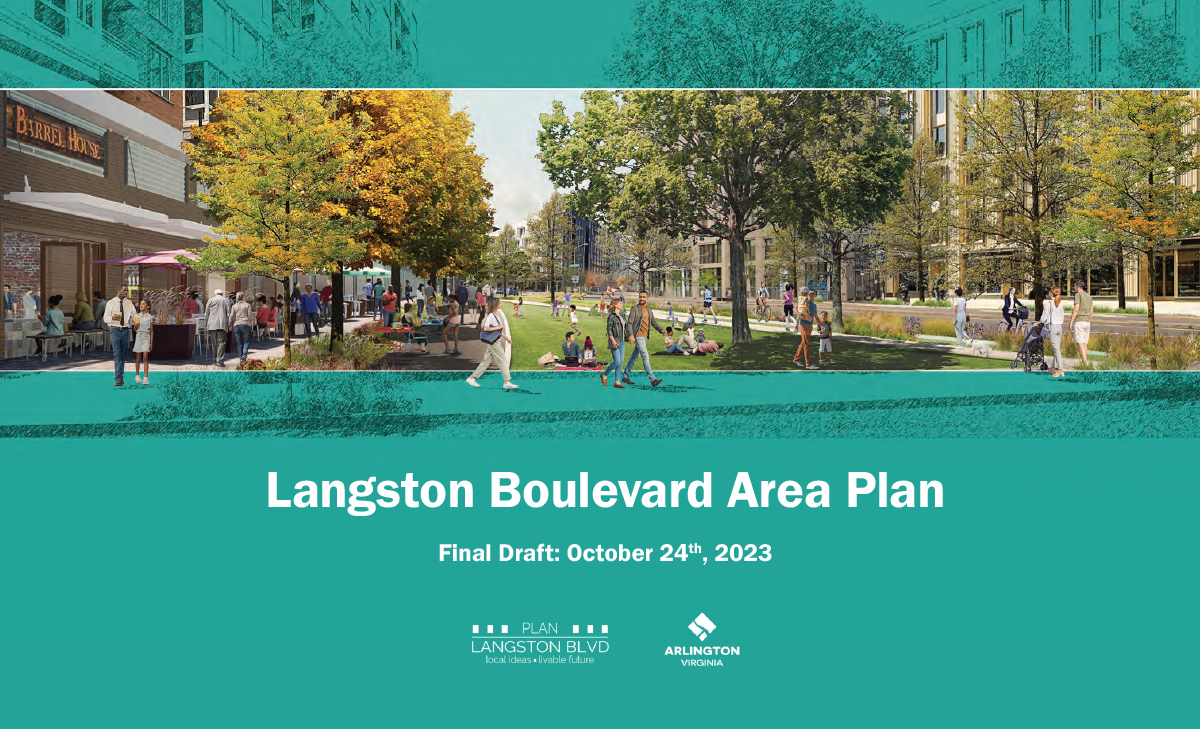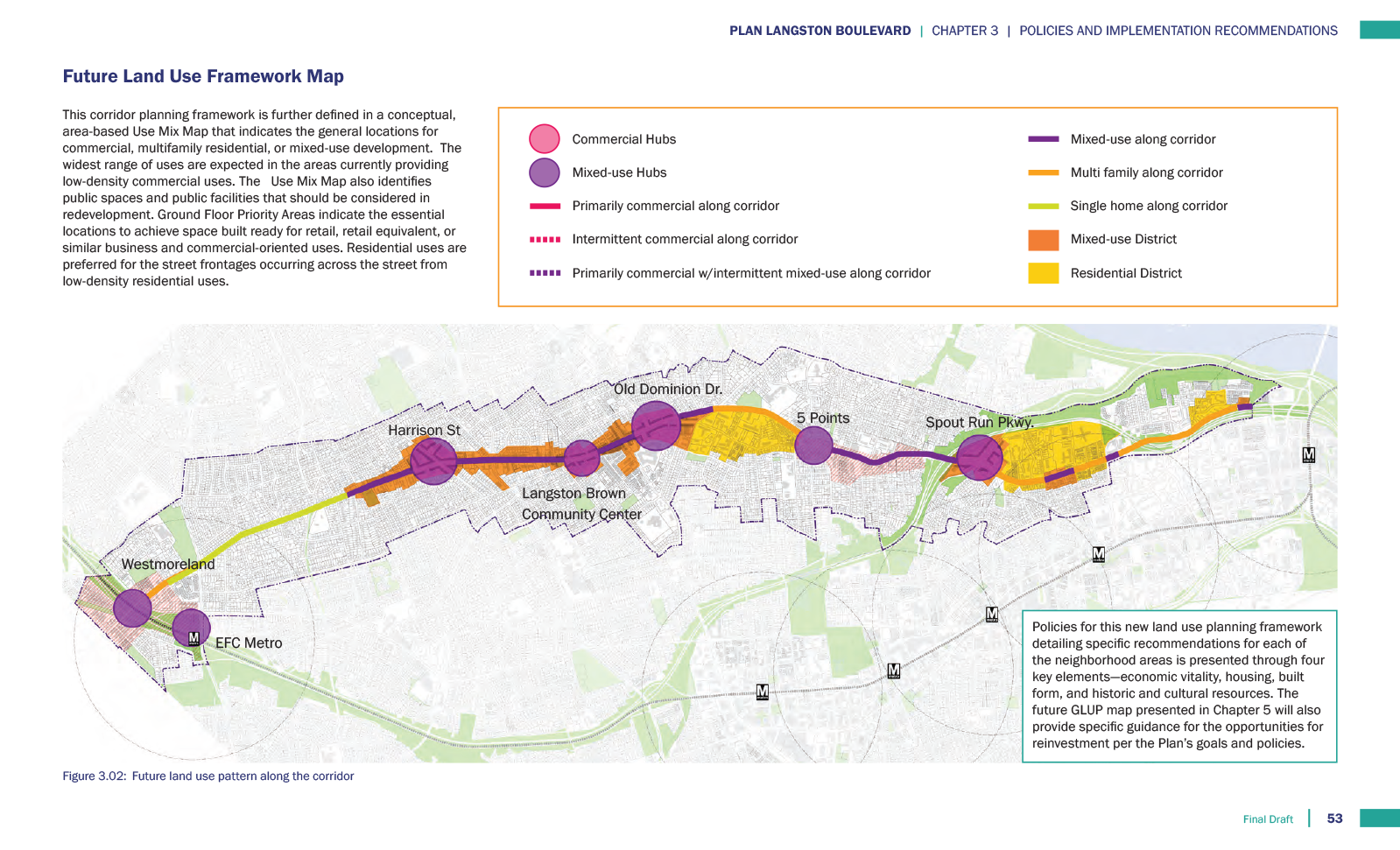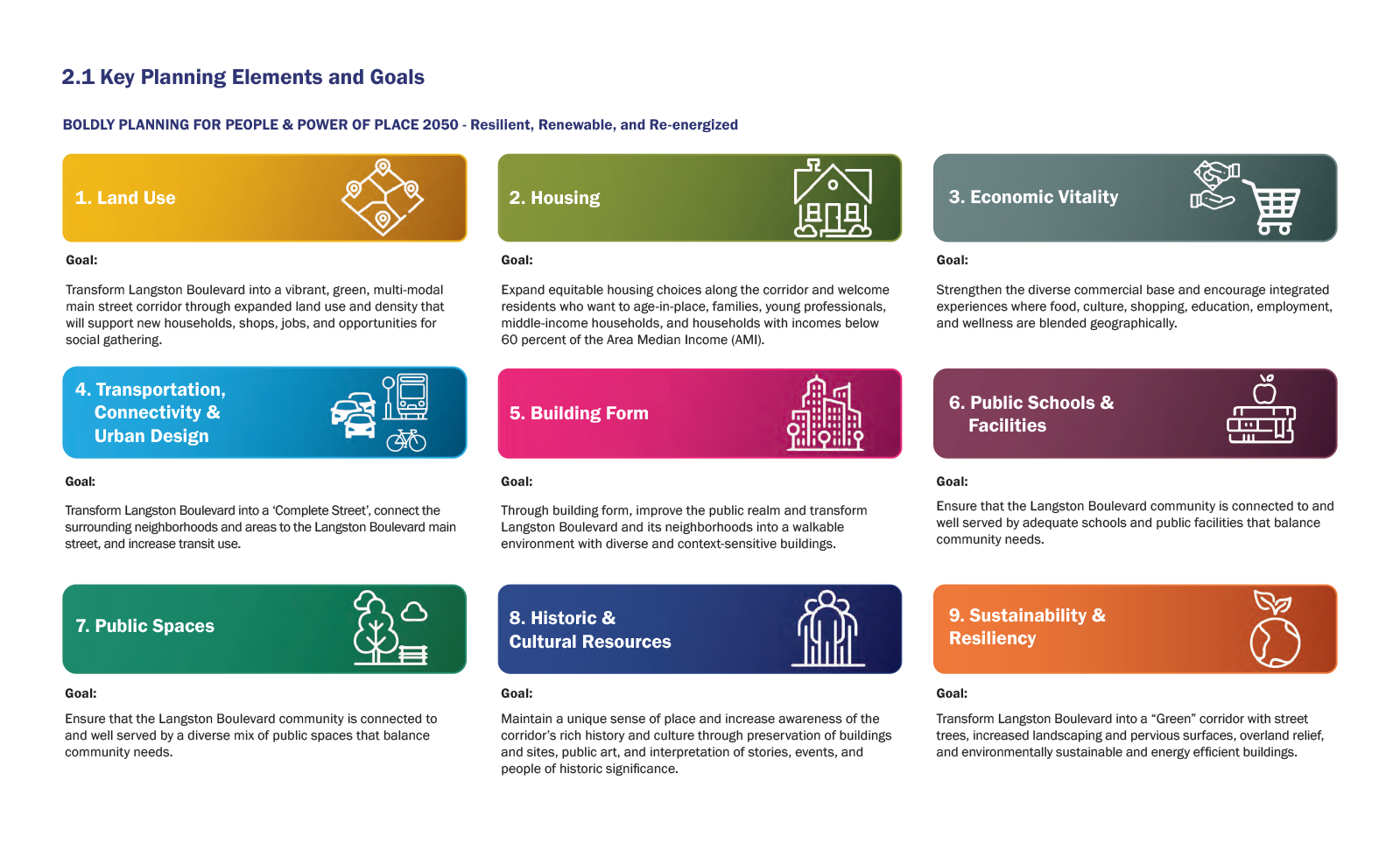Plan Langston Boulevard
Plan Langston Boulevard History
In 2012, grassroots efforts to plan Langston Boulevard began. Civic association presidents got together to talk at regular breakfast gatherings, and walking tours and community meetings offered residents the opportunity to learn and exchange ideas. Then the establishment of the Langston Boulevard Alliance (LBA) resulted in the development of guiding principles, a preliminary community vision, and recommendations to create an adopted County plan for Langston Blvd. The vision called for Langston Blvd. to become a walkable main street with a string of neighborhood activity centers between Rosslyn and East Falls Church, with new transportation and housing options, better public spaces, and more.
In 2019, the County recognized community support for that vision. Understanding growing market pressure and the opportunity to realize County goals through reinvestment, the County initiated a planning study. Plan Langston Boulevard (PLB), passed by the Arlington County Board in 2023, built upon the work of hundreds of citizens and the many previous community visioning efforts.

Plan Langston Boulevard Vision
The Langston Boulevard Area Plan envisions economic sustainability, environmental resilience, and equity, connecting the key planning elements into a cohesive roadmap toward the future. This plan enables growth along Langston Blvd. that will reflect a sustainable and equitable approach to land use planning, leveraging proximity to transit and activity centers to reduce travel times and carbon emissions and meet the housing needs of increasingly diverse residents and household types.
Implementation of this plan promotes long-term climate adaptation and resiliency. Adaptation and resilience are complementary—adaptation allows a place and people to thrive in a changing environment, while resilience is the ability to anticipate and recover from adverse impacts. Long-term resiliency includes thoughtful strategies for enduring competitiveness, desirability, and quality of life; a welcoming ecosystem for businesses and residents; public health and safety; and optimizing the cost-effectiveness of government services, operations, assets, and infrastructure. PLB enables more meaningful development than what had been permitted earlier, and can guide development in a positive, purposeful way.
In the News
New draft plan for Langston Blvd calls for private development to help build public benefits
ArlNow | June 29, 2023
Arlington Releases Draft Langston Boulevard Area Plan
thelandlawyers.com | June 28, 2023
Langston Blvd planning effort elicits strong opinions from residents about the future of their neighborhoods
ArlNow | March 18, 2023
More urbanization proposed for Arlington's Langston Blvd. corridor
insidenova.com | August 26, 2022
LBA’s Participation in the Site Plan Application Process
When landowners in Arlington decide to redevelop their property, it’s sort of like writing a novel. The County has a certain process it goes through—many chapters! Lots of characters!—before the “story” concludes.
Here are the steps:
Step One
Conceptual Site Plan
(Optional)
A sort of first draft. Landowners can submit a conceptual site plan to get feedback on their ideas from the County’s Department of Community Planning, Housing and Development staff before spending loads of time and money. During this time, LBA encourages the landowner to also seek feedback from the surrounding community and offers a neutral venue for discussion.
Staff feedback and the community input may significantly and positively affect the landowner’s plan—a win-win for everyone.
LBA encourages applicants (the landowners) to take advantage of such feedback at this early stage. Should LBA take a position, it will not be until later in the process when there is a more solidified application.
Step Two
Preliminary Site Plan Application
At this stage, county staff checks to see if the application meets the rules of submission. The Planning Commission Chair appoints a Site Plan Review Committee (SPRC) Chair and staff creates a schedule for the meetings. This sets up the administrative foundation for the review process.
LBA keeps tabs on preliminary site applications and may provide informal feedback. The aim is to encourage the informal exchange of questions and information.
Step Three
Active Site Plan Application
The Site Plan Review Committee, appointed by the Planning Commission Chair, includes representatives from the community including the affected civic associations and homeowner associations. The County will post a project website so that all materials are easily accessible.
The County also may begin online engagement so residents can formally submit comments that are reported for use by the SPRC and added to the project website. Often, the SPRC Chair and staff will host an in-person or virtual site tour.
Step Four
Site Plan Review Process
The SPRC will host several meetings that give the applicant feedback on topics related to the development such as architecture, transportation, tree canopy and open space. This helps to prepare them for hearings before the Planning Commission and County Board.
Residents will have opportunities to weigh in with public comment in-person and/or online.
The applicant takes the feedback and revises their plans.
LBA’s Board will be reviewing the project, listening to all stakeholders, and considering how well the proposal aligns with the goals of Plan Langston Boulevard. LBA may provide feedback to the SPRC based on that analysis.
Step Five
Commission Hearings and County Board Hearings
After the SPRC wraps up its review, it reports its discussions, including areas of consensus and areas of disagreement, to the Planning Commission for its hearings.
Again, community members can provide written or in-person public comment during the hearings. Note that at all times during this process, the county staff are open to both written and informal comments from any interested party. Those written comments become part of the record for the project.
As changes and fine-tuning continue, LBA will again assess how well the project aligns with the goals of PLB and may provide feedback to the Planning Commission and/or the County Board.
For details, visit the Site Plan Review Process website.
Stay in the know!
Sign up for our monthly email for the latest info on what’s happening on the corridor.



